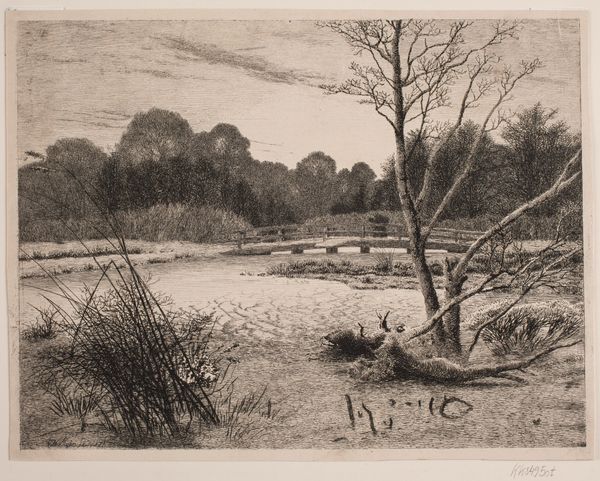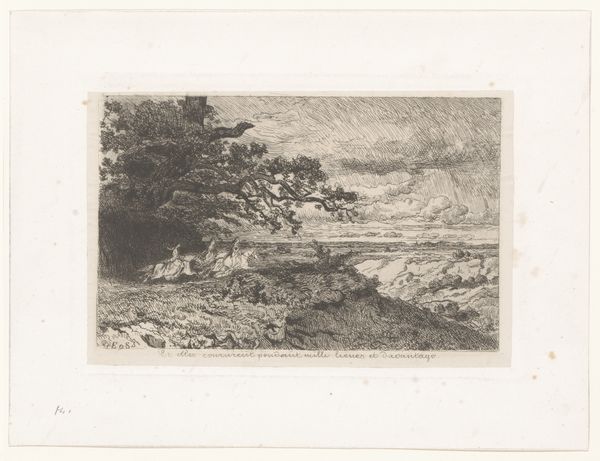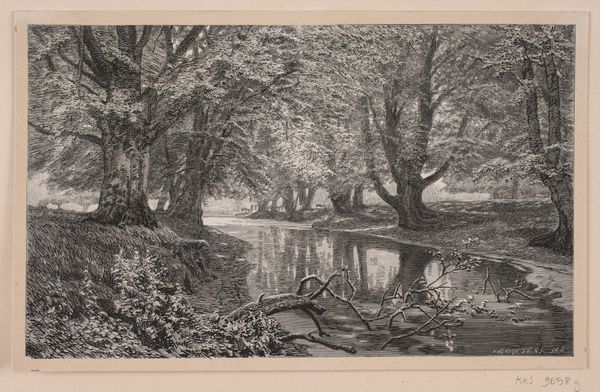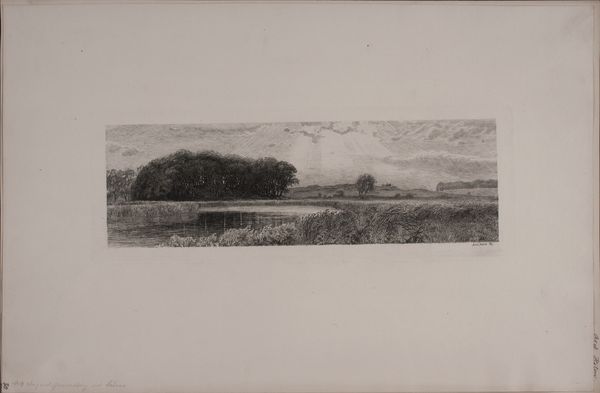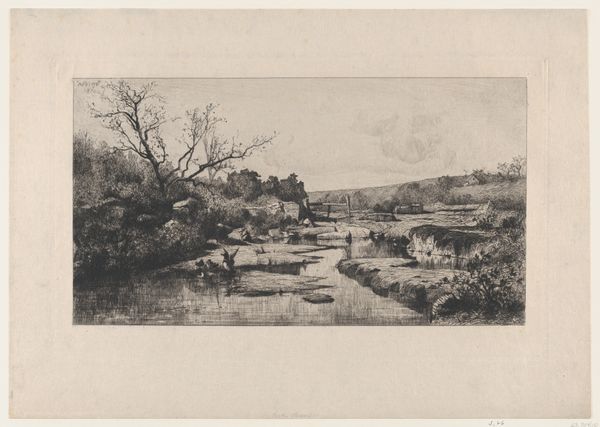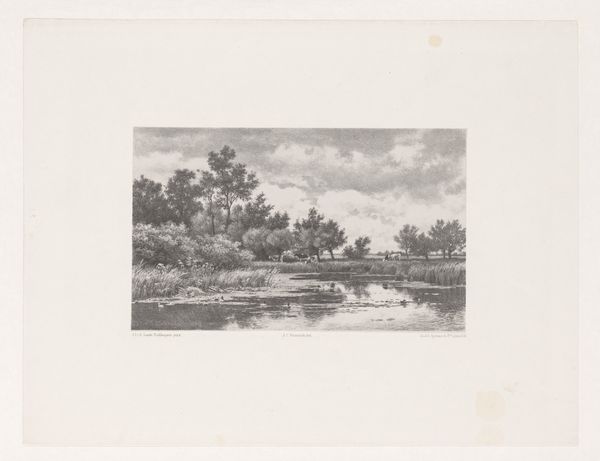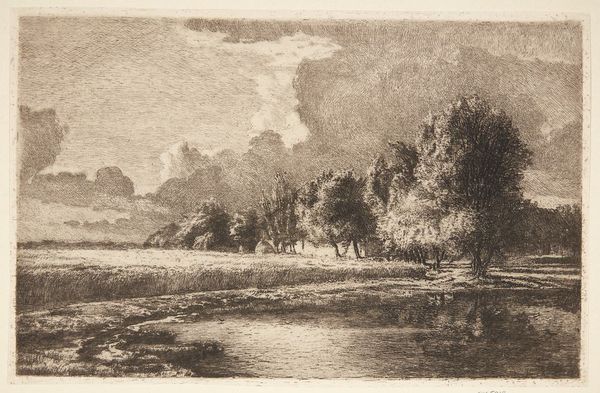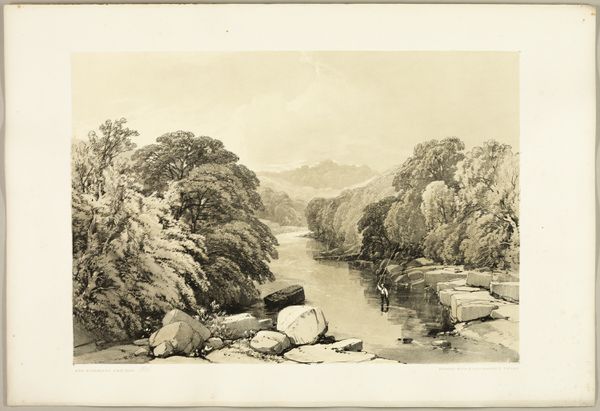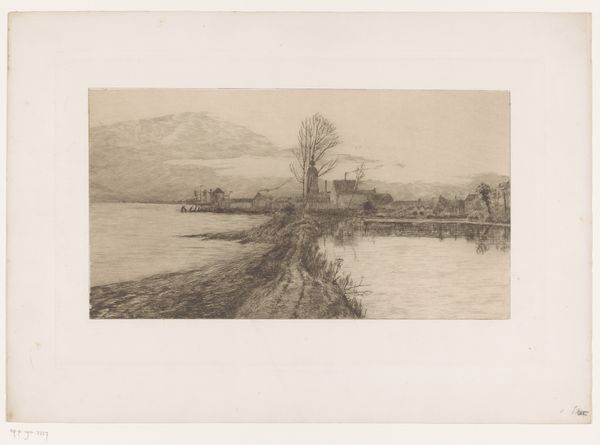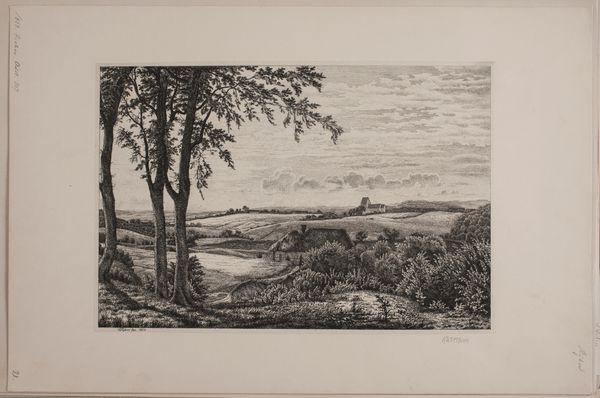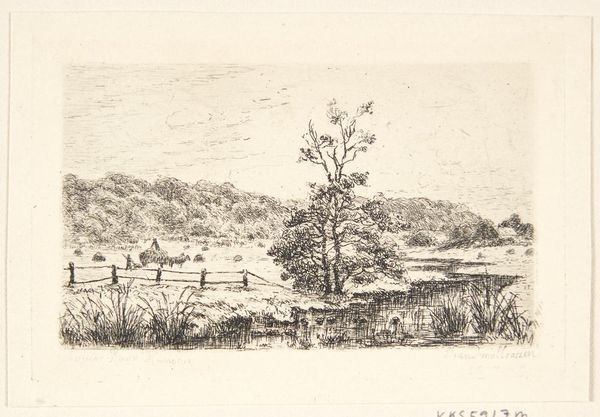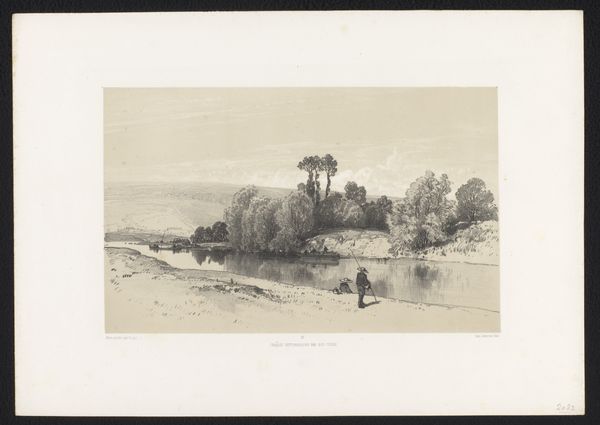
print, etching
#
snowscape
# print
#
etching
#
landscape
#
genre-painting
#
realism
Dimensions: 247 mm (height) x 385 mm (width) (plademaal)
Curator: Welcome, everyone. Today, we're observing "Dammen ved Strandmøllen," or "The Pond at Strandmøllen," an etching by Peder Mønsted, dating back to 1900. Editor: Right away, I’m struck by the density. It feels almost claustrophobic, like the reeds and the water are pressing in on you despite the expansive sky. Curator: Yes, Mønsted certainly packed the scene. It’s a masterful display of etching, creating depth through layered lines. You know, Mønsted was primarily a landscape painter known for his realistic depictions. He excelled in capturing subtle shifts in light and atmosphere in all seasons, so what do we see here reflected in the medium of the print? Editor: The choice of etching emphasizes labor. The landscape isn't romanticized here but grounded in its creation through laborious action and material handling—acid, metal, the printing press. Think of how different the feel is compared to an oil painting capturing similar light, eh? Curator: Exactly, that's interesting. Considering the socio-political climate of 1900, where industrialization was burgeoning and questions of labor were very present, Mønsted is drawing the audience to a genre scene by looking at landscapes and through a medium where "the mark of the hand" feels present. Editor: And that small boat abandoned on the shore… a vehicle of potential, now idle. It whispers stories of those who depend on the pond’s bounty, who work or would work in these marshes. There’s a very human presence evoked through its absence, the empty boat. Curator: That touches on the core, really. It’s not just pretty scenery. Look at the reflection of light on the water, the intricacy of branches overhead and how they make you feel about an enveloping stillness. It's a reminder of the quiet corners where the industrial age and pre-industrial age world cross paths. It makes you wonder: does he feel melancholy about the old ways or see beauty in this fusion? Editor: I lean toward that fusion and its tension. It acknowledges not just the surface-level picturesque qualities but also the grit beneath. The medium itself reflects the transition of materials. It invites questioning the boundaries between observation and representation. The craft transforms. It invites deeper scrutiny beyond merely seeing the lovely reflections on the water’s surface. Curator: An insightfully crafted piece and an example of Mønsted looking beyond traditional landscapes. Editor: Yes, it’s not a mere postcard scene; it's a reflection of our relationship with labor and landscape.
Comments
No comments
Be the first to comment and join the conversation on the ultimate creative platform.
